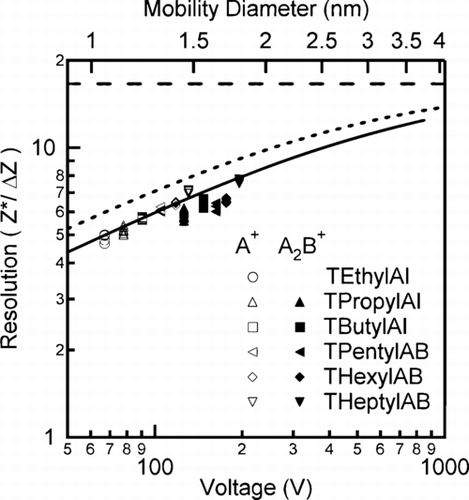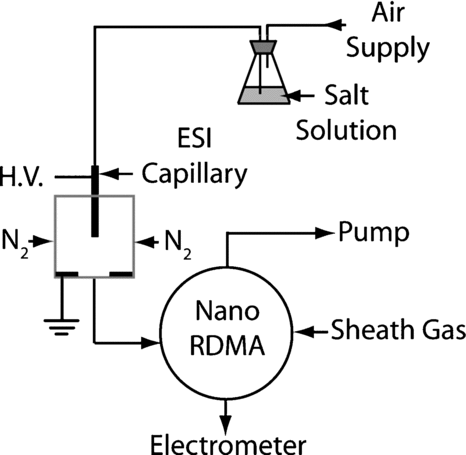Figures & data
FIG. 1 Simplified schematic of the nano-RDMA operation illustrating the direction of the sheath gas flow (Qsh ), the aerosol inlet (Qa ), the sampled outlet (Qs ), and the excess flow outlet (Qe ).
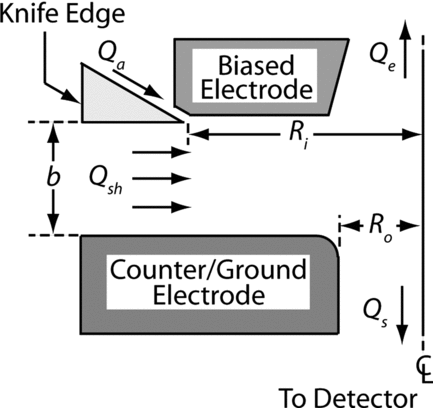
FIG. 2 Detailed schematic of the nano-RDMA. The materials used for construction are noted in the text. Filled circles represent O-Rings. The inset depicts the slip fit tolerances and the knife edge in more detail as well as the location where precision shim disks are placed to create a gap between the chamfer and the knife edge through which the aerosol leaves the racetrack and enters the sizing portion of the device.
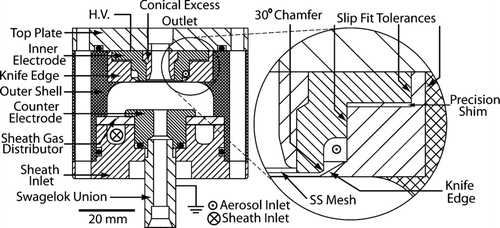
FIG. 4 Inverse mobility distributions of (a) TPropylAI, (b) TButylAI, and (c) THeptylAB. The long dash curve fits the A+ (i.e., R4N+) distribution and the short dash curve fits the A2B+ distribution. The mobility values plotted are scaled values.
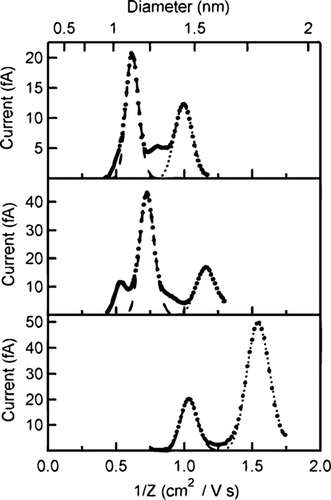
FIG. 5 Compilation of the geometric mean mobilities obtained from fitting size distributions plotted versus the mobility found previously (CitationUde and de la Mora 2005). The empty symbols are for the monomer and the filled symbols are for the dimer.

FIG. 6 Inverse mobility distributions of (a) TEthylAI, (b) TPentylAB, and (c) THexylAB. The long dash curve fits the A+ (i.e., R4N+) distribution and the short dash curve fits the A2B+ distribution. The mobility values plotted are scaled values.
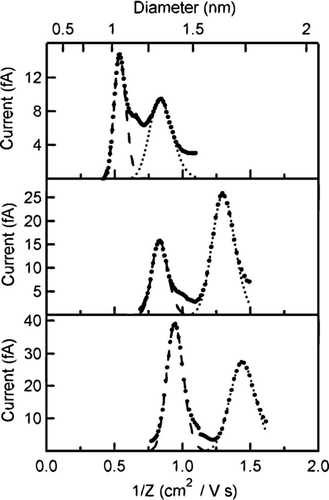
TABLE 1 Previously determined and experimentally measured inverse mobilities for each of the different tetra-alkyl ammonium salts as well as the calculated resolution
FIG. 7 Comparison of the theoretically calculated and experimentally measured resolution. The empty symbols correspond to the monomer whereas the filled symbols are for the dimer. The solid line corresponds to the fit of the experimental data while the dashed lines are the calculated theoretical limits in the diffusion regime (short dash) and in the absence of the effects of diffusion.
